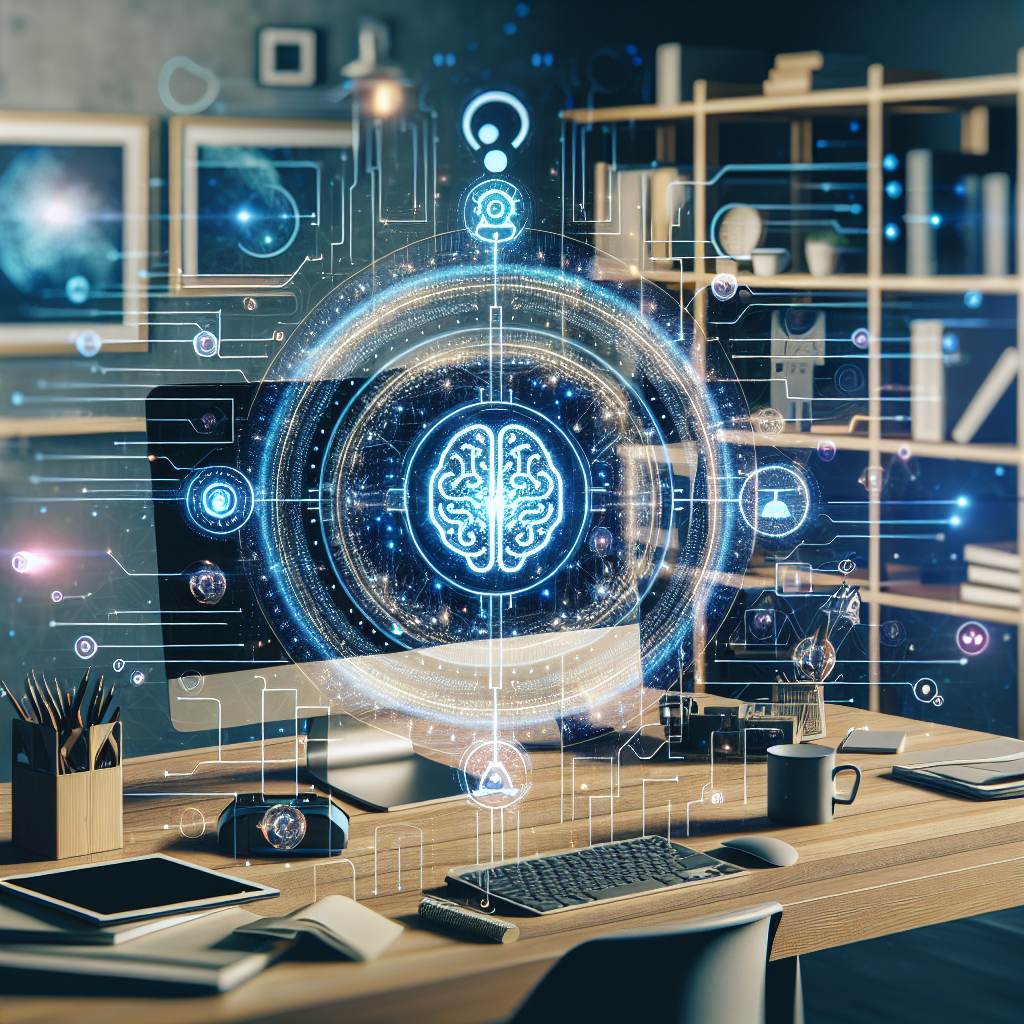Artificial Intelligence (AI) has become an integral part of our daily lives, with virtual assistants being one of the most popular applications of this technology. Virtual assistants, such as Apple’s Siri, Amazon’s Alexa, and Google Assistant, have become increasingly sophisticated over the years, thanks to advances in AI development.
The potential of AI development in virtual assistants is vast, as these tools continue to evolve and improve in their ability to understand and respond to human queries. In this article, we will explore the current state of virtual assistants, the potential for future development, and some frequently asked questions about this exciting technology.
Current State of Virtual Assistants
Virtual assistants have come a long way since their inception, with early versions being limited in their functionality and accuracy. Today, virtual assistants are highly advanced, utilizing AI algorithms to understand natural language, learn from user interactions, and provide personalized responses.
These virtual assistants are capable of performing a wide range of tasks, including answering questions, setting reminders, playing music, controlling smart home devices, and even making reservations. They have become an indispensable tool for many individuals, helping to streamline daily tasks and improve productivity.
One of the key advancements in virtual assistant technology is the use of machine learning algorithms, which enable these tools to continuously improve and adapt to user needs. By analyzing user interactions and feedback, virtual assistants can learn to better understand context, preferences, and intent, leading to more accurate and relevant responses.
Another important development in virtual assistant technology is the integration of voice recognition technology, which allows users to interact with these tools using natural language. This has made virtual assistants more accessible and user-friendly, as users can simply speak commands or questions to receive instant responses.
Future Development of Virtual Assistants
The potential for AI development in virtual assistants is vast, with many exciting possibilities on the horizon. As AI technology continues to advance, virtual assistants are expected to become even more intelligent, personalized, and proactive in their interactions with users.
One area of future development for virtual assistants is the ability to understand and respond to emotional cues. By incorporating sentiment analysis algorithms, virtual assistants could become more empathetic and responsive to users’ emotions, providing more personalized and supportive interactions.
Another key area of development is the integration of multi-modal capabilities, such as combining voice, text, and visual inputs to provide more comprehensive and interactive responses. This could enable virtual assistants to better assist users with complex tasks, such as navigating a website or completing a multi-step process.
Additionally, virtual assistants are expected to become more proactive in anticipating user needs and providing timely recommendations or suggestions. By leveraging data analytics and predictive modeling, virtual assistants could offer personalized insights, reminders, and recommendations based on user behavior and preferences.
Overall, the future of virtual assistants is bright, with AI technology driving continuous innovation and improvement in these tools. As virtual assistants become more advanced and sophisticated, they have the potential to revolutionize how we interact with technology and enhance our daily lives in countless ways.
FAQs about Virtual Assistants
Q: How do virtual assistants work?
A: Virtual assistants utilize AI algorithms to process natural language inputs, understand user intent, and generate appropriate responses. These tools rely on machine learning techniques to continuously improve and adapt to user needs.
Q: What can virtual assistants do?
A: Virtual assistants can perform a wide range of tasks, including answering questions, setting reminders, playing music, controlling smart home devices, making reservations, and more. They are designed to help streamline daily tasks and improve productivity.
Q: Are virtual assistants secure?
A: Virtual assistants prioritize user privacy and security, with measures in place to protect sensitive information and prevent unauthorized access. Users can also customize privacy settings and permissions to control how their data is used.
Q: Can virtual assistants learn from user interactions?
A: Yes, virtual assistants can learn from user interactions and feedback to improve their accuracy and relevance. By analyzing user behavior and preferences, virtual assistants can provide more personalized and effective responses.
Q: What is the future of virtual assistants?
A: The future of virtual assistants is expected to be highly advanced, with capabilities such as emotional intelligence, multi-modal interactions, proactive recommendations, and more. AI technology will continue to drive innovation and improvement in virtual assistant technology.
In conclusion, the potential of AI development in virtual assistants is vast, with these tools poised to become even more intelligent, personalized, and proactive in their interactions with users. As AI technology continues to advance, virtual assistants will play an increasingly important role in how we interact with technology and enhance our daily lives. With continuous innovation and improvement, virtual assistants have the potential to revolutionize how we access information, complete tasks, and communicate with the world around us.

